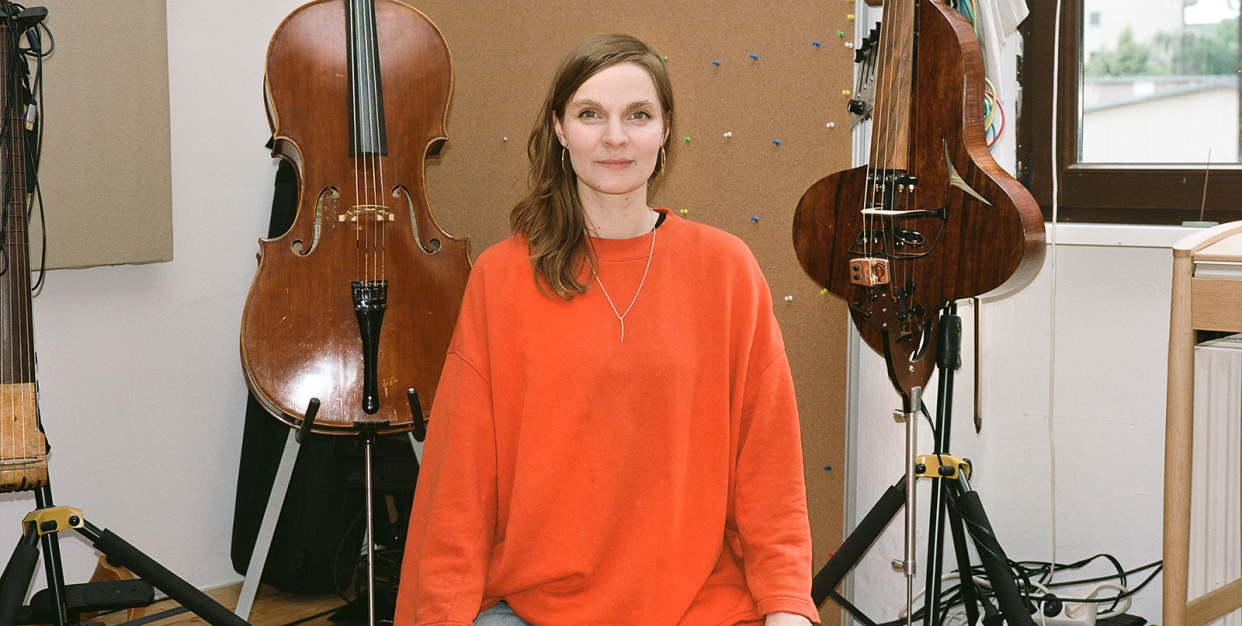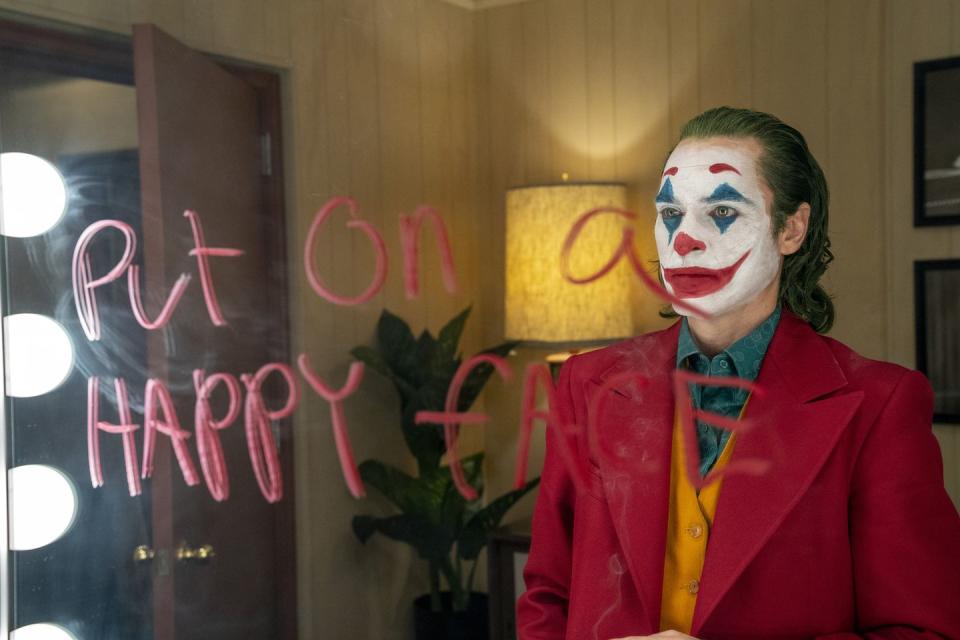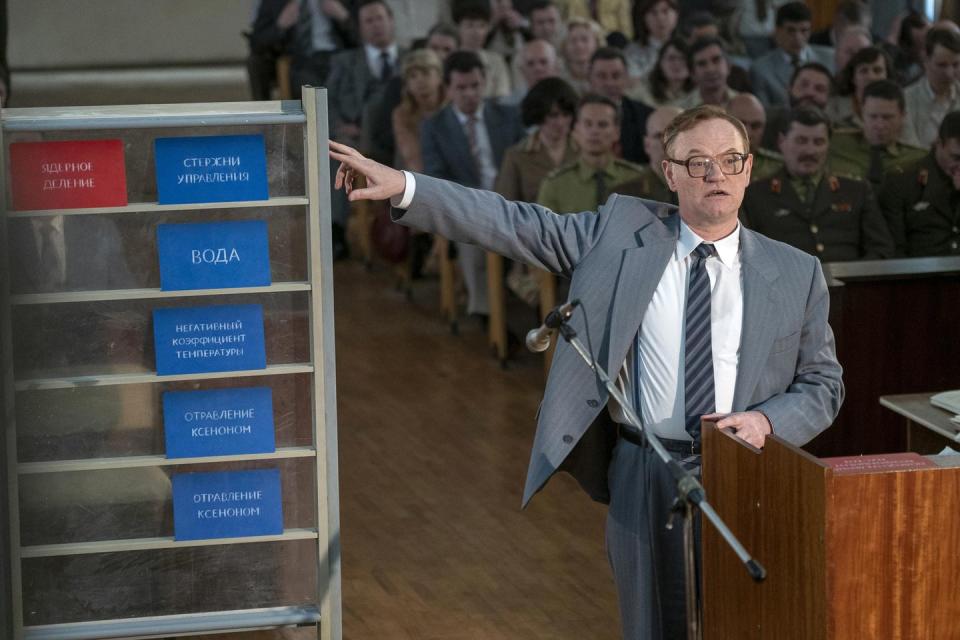'Joker' Composer Hildur Guðnadóttir Is Shaking Up The Industry

Should you wish to challenge the grand traditions of film and television soundtracks — the soaring strings, the thumping timpani, the heavenly choirs — you probably could not get much farther from the status quo than recording one on a nuclear reactor. And yet, for the much-lauded HBO series Chernobyl, this is exactly what the 37-year-old Icelandic composer Hildur Guðnadóttir did. And yes, to be clear, that’s “on”, not “in”.
“Music is a very physical experience, and I need to understand things physically to be able to create the narrative for them,” says Guðnadóttir, who lives in Berlin with her seven-year-old son, “so I went to the same plant where the series was shot [Ignalina in Lithuania] with a score producer and a field recording engineer, and we spent hours and hours recording the space, listening to the machine rooms and the reactor rooms. I created the score out of those sounds. There’s not one instrument there in the series.”
The vast, haunting, soundscape she created was integral to the mood of Chernobyl, a five-part docu-drama that recreated the events of the 1986 nuclear power plant disaster, and has been nominated for “outstanding music composition” at this year’s Emmys (Esquire went to press prior to the award-winners being announced). In further recognition of the excitement building around her work, in July this year, Guðnadóttir was made a member of the Academy of Motion Picture Arts and Sciences (the Oscar folks, to you and me).
The film-music industry, she admits, has been “extremely male-dominated”, but “there’s a change definitely happening.” Even the fact that a score made up of mechanical noises has been singled out for praise is symptomatic of that shift. “I think as you have a more diverse group of people working in the industry, you automatically have more diverse storytelling,” she says. “That’s definitely to be celebrated for sure.”
Sometimes, says Guðnadóttir, a project demands a more traditional approach. While she was doing Chernobyl, she was also working on the soundtrack for Todd Phillips’ recently released feature film Joker, the genesis story of Batman’s most infamous adversary, which, she says, was a “classic fictional narrative that probably couldn’t be more different” and was an opportunity for her imagination to “run wild a bit more”. For that one, she decided to write something orchestra-led, though this time it was the process that was unconventional.

“Todd sent me the script right after he finished it and he asked me to respond to it musically straight away. So I wrote music just from the feeling that I got from the script, imagining what the sound and the pacing of the narrative would be. He really resonated with what I wrote so he ended up shooting a lot of the material, I think, to the music I had already written [most film soundtracks are written to shot footage]. That was really wonderful because the music and the film have really grown together as one whole.”
Joker is the second soundtrack she has worked on for a film starring Joaquin Phoenix; in 2018, she composed the score for Garth Davis’s Mary Magdalene, in which Phoenix played Jesus (of course he did). “I haven’t met him personally very often,” she says, “even though I’ve spent more hours with him in the same room, with him on the screen, than anyone else. It’s hard to have a conversation with him when he’s in character, because for a role he gets completely absorbed by it. He really, really goes in deep. And I mean, like, seriously deep — you really feel it.”
Still, she says, “I seem to have accidentally found the actor that I’m always working with. And definitely, if I had to choose one, then Joaquin is a wonderful choice.”
Guðnadóttir has also performed cello solos on other soundtracks — Alejandro G Iñárritu’s The Revenant; Sicario and Arrival for Denis Villeneuve — an instrument she began playing aged five. “My mother was an opera singer and my father is a clarinet player, composer and conductor. There are a lot of classical musicians in my family, so I grew up with that being kind of normal. When my mother was pregnant with me she was listening to Jacqueline du Pré a lot and was very inspired by her story. So she was sure that this child was going to be called Hildur [after du Pre’s fiery playing style: in Icelandic “Hildur” means “battle”] and be a cellist. And lo and behold!”

Her first gig as a professional musician came early, aged 10, working alongside her mother at a Viking-themed restaurant in Iceland: “In the summer season we would hijack buses full of tourists on their way from the airport and take them to this park where they had these caves and I would sing to them and serve them shark.”
She attended the Reykjavik Music Academy and later the Iceland Academy of Arts and the Universität der Künste in Berlin, though she says, “I never had any ambition to become a cellist in an orchestra. I came at it from a bit more of an experimental place.”
Now, she says, “I’m grateful that I did start out in the classical route because I think, particularly if you’re playing a string instrument, there’s so many tiny nuances that it would take a lot longer to figure out yourself. I’m really glad I did it, even though I was a bit of a pain in the ass probably as a student. Like, I always had a really hard time being told how music should be, that there was a right and a wrong. It was very unnatural to me. I had this theory that the less I practised the better I was.” She laughs. “I can confirm that it was not true.”

Guðnadóttir’s unconventional take on composing has seen her collaborate with the likes of Múm, The Knife and Throbbing Gristle, as well as making five solo albums of her own; after Chernobyl and Joker she says she needs “a little bit of a film break. I’m going to start focusing a bit on just music for music’s sake.” (She does mention, however, that some live performances from Chernobyl are in the works.) Whichever project she does get involved with next, there’s likely to be, let’s say, a certain mood.
“I seem to always be drawn to darker narratives more than lighter,” she says. “That confuses people a lot, because my natural personality is normally very light and I laugh a lot. I’m not a very dark person myself! The only way that somehow I can explain it is that every person has a dark side and a light side; the darkness has to come out somewhere. My dark side seems to want to come out through music.”
Like this article? Sign up to our newsletter to get more delivered straight to your inbox.
You Might Also Like


